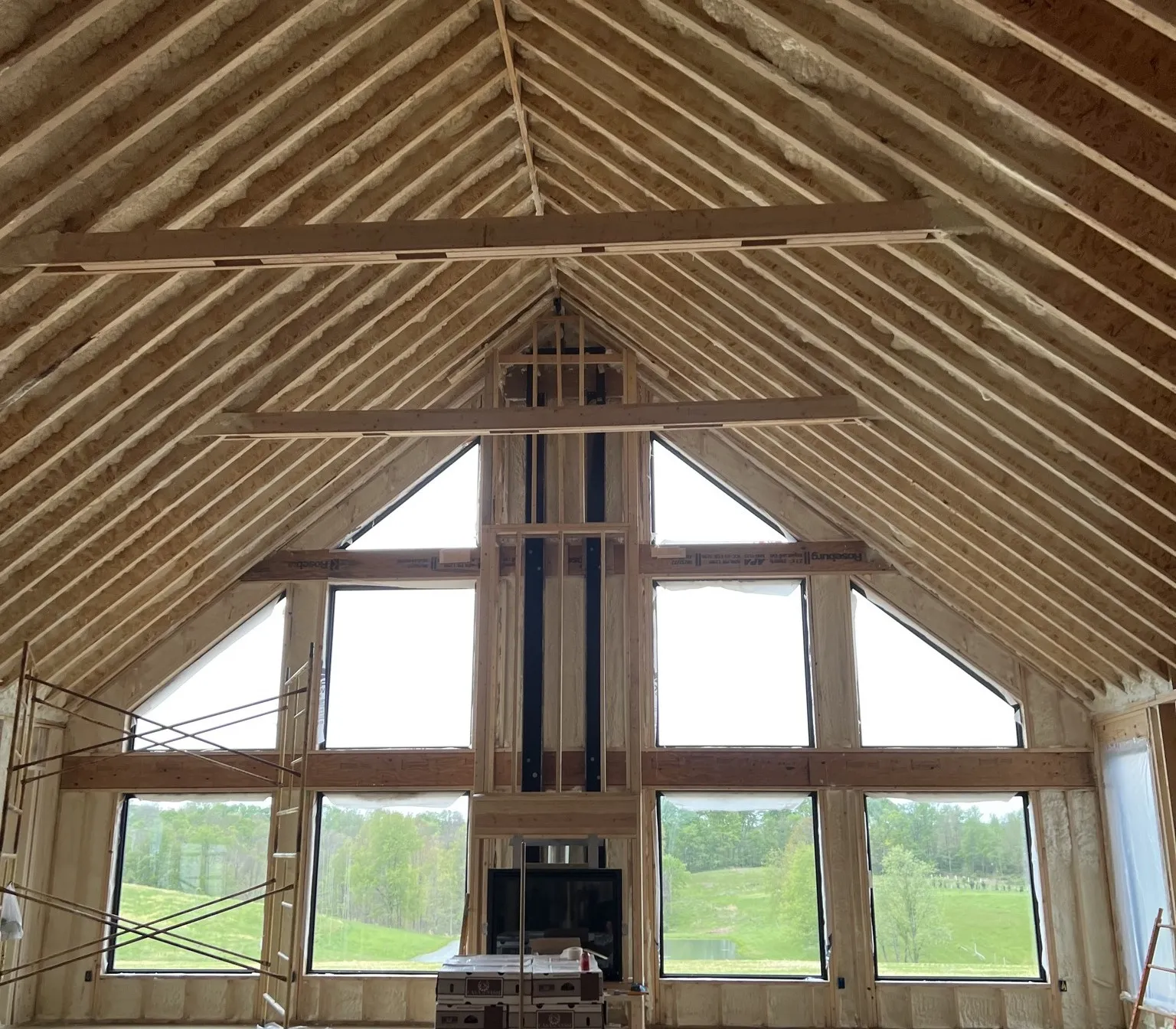
Spray foam insulation provides a durable, efficient solution for homes and buildings in Lancaster, OH. It outperforms traditional materials in energy retention, moisture resistance, and lifespan. The seven reasons outlined below reflect practical installation experience, technical specifications, and direct knowledge of local environmental needs.
Lancaster faces wide seasonal temperature swings and moderate humidity levels that demand insulation capable of maintaining thermal stability year-round. Spray foam insulation meets this challenge effectively.
Ohio Valley Spray Foam brings field experience across residential, commercial, and agricultural properties in this region, ensuring the information presented reflects what actually performs well in Lancaster’s climate.
Spray foam insulation minimizes air leakage by sealing gaps better than fiberglass or cellulose. In Lancaster homes, this means less reliance on HVAC systems during both hot summers and cold winters.
| Insulation Type | R-Value per Inch | Air Sealing Effectiveness | Common Installation Areas |
|---|---|---|---|
| Closed-Cell Spray Foam | 6.0–7.5 | Excellent | Walls, basements, attics |
| Open-Cell Spray Foam | 3.5–3.8 | Very Good | Attic roof decks, soundproofing walls |
| Fiberglass Batt | 2.9–3.8 | Poor | Framed walls, attics |
| Blown-In Fiberglass | 2.2–2.7 | Poor | Attic floors, wall cavities |
Bonus Tip: In older homes with irregular cavities, spray foam performs better due to its expansion properties, fully sealing corners and voids.
Closed-cell foam adds a vapor barrier, significantly lowering the chance of moisture infiltration. Lancaster’s moderate humidity levels make this a key benefit for preventing mold growth in walls and crawlspaces.
| Material | Moisture Resistance | Mold Resistance | Recommended Use Location |
|---|---|---|---|
| Closed-Cell Spray Foam | High | High | Basements, crawlspaces |
| Open-Cell Spray Foam | Moderate | Moderate | Interior walls, above-grade spaces |
| Fiberglass | Low | Low | Less effective in humid areas |
Spray foam maintains its R-value and structure over time. Fiberglass and cellulose degrade or settle, reducing effectiveness.
Bonus Tip: Closed-cell foam also increases structural strength in walls and roofs, supporting longevity in pole barns and commercial buildings.
Open-cell foam significantly reduces sound transfer. This is useful for both residential properties near busy roads and agricultural buildings exposed to machinery noise.
| Material | Sound Dampening Capacity | Ideal Applications |
|---|---|---|
| Open-Cell Spray Foam | High | Interior walls, ceilings |
| Closed-Cell Spray Foam | Moderate | Exterior walls, floors |
| Fiberglass | Low | Limited to acoustic panels |
Spray foam insulation works across homes, commercial buildings, barns, and metal structures. Its adhesive quality enables secure application to a variety of surfaces, including metal, concrete, and wood.
Bonus Tip: For metal buildings, closed-cell spray foam helps eliminate condensation, which is a frequent issue in Lancaster’s winter-to-spring transitions.

According to the U.S. Department of Energy, heating and cooling account for 50-70% of energy use in American homes. Spray foam cuts energy consumption by up to 40%, offering faster payback on installation costs (Source: energy.gov).
| Application Area | Energy Savings (Est.) | ROI Timeframe (Average) |
|---|---|---|
| Attic (Open-Cell) | 20-30% | 3-5 years |
| Whole Home (Mixed) | 30-50% | 2-4 years |
| Commercial Roof Deck | 35-55% | 3-6 years |
Lancaster’s winters often reach below freezing, and summers climb into the 80s. Spray foam’s airtight seal prevents heat loss and gain more effectively than traditional materials.
| Local Condition | Spray Foam Impact |
|---|---|
| Sub-zero winter nights | Prevents heat loss through air infiltration |
| Summer heat with humidity | Reduces AC load by sealing radiant heat sources |
Yes, once cured, spray foam emits no VOCs. Professional installation ensures proper ventilation during the process.
Yes. Many start with attics or crawlspaces and expand based on energy results.
It typically lasts 20+ years with minimal performance degradation.
Clear access to surfaces, check for moisture issues, and confirm electrical/plumbing readiness.
Ohio Valley Spray Foam provides experienced installation of spray foam systems suited to Lancaster’s weather and building types. Direct knowledge of local conditions ensures results that match performance expectations.
Phone: (740) 373-3626
Email: [email protected]
Closed-cell foam blocks moisture effectively, helping control indoor humidity year-round.
Yes. Hybrid systems (e.g., foam on walls, fiberglass in attic) are common based on budget and access.
Closed-cell foam adds rigidity, which can benefit walls and roofs in barns and commercial buildings.
Yes. Foam expands 30-60x its liquid volume, ensuring complete coverage when applied correctly.
Not usually. If undisturbed and properly applied, spray foam will not need reinstallation.